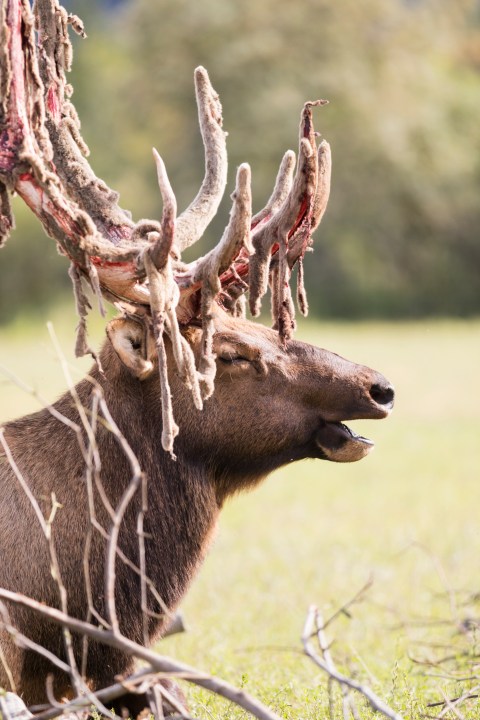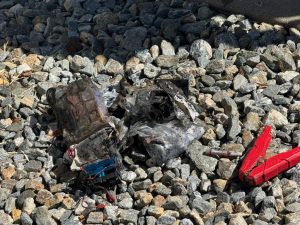[ad_1]
DENVER (KDVR) — In the late summer, male elk and other animals display a shocking sight of blood on their antlers. While it may look painful and fairly grisly, it’s completely harmless and actually natural.
This process is known as bull elk shedding the velvet on their antlers, which begins after male elk are about a year old, then occurs annually beginning in August, according to the National Park Service.
The park service said this healthy and painless process starts when antlers are growing on bull elk, which are protected by a soft, velvet covering. Once the antlers are fully developed, elk will remove them by rubbing them against objects like trees and brush.
Bridget O’Rourke, a statewide public information officer with Colorado Parks and Wildlife, said that it typically bleeds for a day or two and then heals over. While this is a natural and painless process, it can seem fairly gruesome.
Here’s what it looks like:
The park service said the process starts in March when a hormonal shift causes bulls to shed their antlers. New antlers grow and are covered with velvet.
“When antlers are growing, they are covered in a layer of soft, furry tissue called velvet. The velvet contains many blood vessels that supply oxygen and nutrients to the growing antlers,” said Bridget O’Rourke, a statewide public information officer with Colorado Parks and Wildlife.
By August, the park service said a change in hormones stops the growth, and bulls scrape off the velvet. This sharpens the antlers, preparing them for mating season, or elk rut, in mid-September to mid-October.
During the elk rut, the park service recommends the “rule of thumb,” where if you stick your thumb out and can still see the elk, you’re too close. This is an active season for elk, and it can be dangerous to get too close.
[ad_2]

Anthony Sutton is a business strategist and writer with a passion for management, leadership, and entrepreneurship. With years of experience in the corporate world, he shares insights on business growth, strategy, and innovation through management-opleiding.org.








